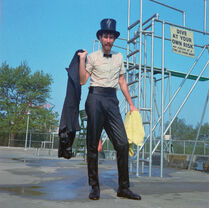No edit summary |
m (necessary for Special:UnusedVideos to work) |
||
| (48 intermediate revisions by 16 users not shown) | |||
| Line 1: | Line 1: | ||
| − | [[Image:title.timepiece.jpg|frame |
+ | [[Image:title.timepiece.jpg|frame]] |
| − | [[ |
+ | [[File:"Time Piece"|thumb|300px|right]] |
| + | [[Image:Timepiecedinner.jpg|thumb|300px]] |
||
| ⚫ | |||
| + | [[Image:Timepiece.flyingjim.jpg|thumb|300px]] |
||
| + | '''''Time Piece''''' is an experimental short film produced, directed, and written by [[Jim Henson]], who also played the leading role. It is his most noted live action production not involving puppetry. |
||
| ⚫ | The surrealist film, |
||
| ⚫ | Henson began the project in the spring of 1964 (initially titling it ''Time to Go''<ref>''[[Jim Henson: The Biography]]'' by Brian Jay Jones (page 110)</ref>) and continued to work on it for nearly a year, between commercial projects and various [[The Muppets|Muppet]] television appearances. The short film premiered on May 6, [[1965]] at the Museum of Modern Art and was distributed through Pathe Contemporary films to arthouse theaters and the film festival circuit. It played in [[New York City]] along with the [[France|French]] feature ''A Man and a Woman.'' |
||
| ⚫ | Apart from the rapid montage cutting and superimposition of objects, Jim Henson used animation heavily to create an impressionistic feel. He personally animated scenes of moving patterns, |
||
| + | |||
| ⚫ | The surrealist film, which runs slightly less than 9 minutes, follows a nameless man who lies in a hospital bed awaiting examination by a doctor through a wide range of experiences. Mundane daily activities are intercut with surreal fantasy and pop-culture references. The relentless passage of time is a recurring motif, both visually, through various clocks, and aurally, through a rhythmic percussion soundtrack which "ticks away" throughout. Key setpieces include an examination of workplace drudgery, a prolonged dinner sequence (intended as a spoof of a scene from the film ''Tom Jones''), and a nightclub visit satirizing the striptease (including a dancing roast chicken and a marionette skeleton). The man also rides a pogo stick, shoots the [[Mona Lisa]], escapes from prison, and gradually applies a coat of pink paint to a living [[Animals in Time Piece#elephant|elephant]]. He assumes different costumes and identities throughout, from [[Tarzan]] to a [[:Category:Westerns|cowboy]], and repeatedly utters the only dialogue in the film, a plaintive cry of "Help!" from increasingly incongruous and perilous positions. |
||
| + | |||
| ⚫ | Apart from the rapid montage cutting and superimposition of objects, Jim Henson used animation heavily to create an impressionistic feel. He personally animated scenes of moving patterns, anticipating those later utilized in various ''[[Sesame Street]]'' inserts. [[Don Sahlin]] supervised the use of pixillation and reverse motion to further "stylize" the movements. |
||
| + | |||
| + | In 2008, the short was made available at [[the iTunes Store]]. |
||
==Trivia== |
==Trivia== |
||
| ⚫ | |||
| ⚫ | |||
| ⚫ | |||
| ⚫ | |||
| ⚫ | |||
| ⚫ | |||
| + | |||
| + | <gallery widths=209 spacing=small orientation=square> |
||
| + | Image:Franktimepiece.jpg|Frank Oz as a messenger boy |
||
| + | Image:Timepiececomic.jpg|Don Sahlin as a comic taking a pie in the face |
||
| + | </gallery> |
||
| + | |||
| + | *The remainder of the cast and crew was largely composed of a range of [[New York City|New York]]-based "bohemian" artists. Portrait artist [[Enid Cafritz]], burlesque stripper [[April March]], Broadway dancer Barbara Richman, and drummer [[Dave Bailey]] all appeared on-camera. Behind the camera, cinematographer [[Ted Nemeth]] had produced experimental animated films with wife Mary-Ellen Bute. The sound department included Bill Schwartau (engineer for Duke Ellington and Peter, Paul, and Mary records), Rudy Van Gelder (a pioneer in the jazz field for his work with the Blue Note label, and still active in film), and Frank C. Andriello (harmonica player and former member of the all-harmonica quartet The Polka Dots). Percussion was supplied by George Devens, referred to in ''All Music Guide'' as the most prolific vibraphone player in the recording industry, and [[Ed Shaughnessy]], long time drummer on ''[[The Tonight Show]]''. |
||
==Awards== |
==Awards== |
||
''Time Piece'' received several film festival awards, including the Blue Ribbon Award from the American Film festival in [[1967]], and was nominated for an [[Academy Award]] in the "Best Short Subject, Live Action Subjects" category. |
''Time Piece'' received several film festival awards, including the Blue Ribbon Award from the American Film festival in [[1967]], and was nominated for an [[Academy Award]] in the "Best Short Subject, Live Action Subjects" category. |
||
| + | |||
| + | ==Behind-the-Scenes Gallery== |
||
| + | <gallery widths="209" orientation="landscape" captionalign="center" spacing="small" > |
||
| + | Image:Timepiece_storyboard.png|Some of Henson's storyboard panels for ''Time Piece''. |
||
| + | Image:timepiece1.jpg |
||
| + | File:Timepiece2.jpg|Henson paints a woman pink. |
||
| + | File:Timepiece3.jpg|Preparing a special effect |
||
| + | File:Timepiece4.jpg|Henson takes a dive. |
||
| + | File:Timepiece5.jpg |
||
| + | </gallery> |
||
==Cast== |
==Cast== |
||
| − | [[Image: |
+ | [[Image:Timepiececast.jpg|frame]] |
:[[Jim Henson]] as the Man |
:[[Jim Henson]] as the Man |
||
:[[Enid Cafritz]] as the Wife |
:[[Enid Cafritz]] as the Wife |
||
| − | :''With the Talents of'' |
+ | :''With the Talents of'' |
| − | :[[Jerry Juhl]], [[Frank Oz |
+ | ::[[Jerry Juhl]], [[Frank Oz]]nowicz, [[April March]], Sandy Patterson, [[Diana Birkenfield]], [[Dave Bailey]], Dennis Paget, [[Jim Hutchison]], Barbara Richman |
==Credits== |
==Credits== |
||
| − | * |
+ | * Director of Photography: [[Ted Nemeth]] |
| − | * |
+ | * Music: [[Don Sebesky]] |
| − | * |
+ | * Percussion: [[Ed Shaughnessy|Ed Shaunessy]], [[George Devens]] |
| − | * |
+ | * Music Recorded by: Rudy Van Gelder |
| − | * |
+ | * Costumes and Makeup: Carroll Conroy |
| − | * |
+ | * Sound Effects: Frank C. Andriello |
| − | * |
+ | * Sound Effects Recorded by: Bill Schwartau |
| − | * |
+ | * Animation: Jim Henson |
| − | * |
+ | * Special Effects: [[Don Sahlin]] |
| + | * Written and Directed by: [[Jim Henson]] |
||
| − | *'''Special Thanks:''' Karl F. Meyer Clock Shop, Restaurant Copain, AMF, Seagrams |
||
| − | * |
+ | * Produced by [[The Jim Henson Company|Muppets Inc.]] |
| − | *'''Produced by [[Muppets Inc.]]''' |
||
==See also== |
==See also== |
||
* [[Time Piece: Film Study]] |
* [[Time Piece: Film Study]] |
||
| + | * [[:Category:Time Piece Characters|Time Piece Characters]] |
||
| + | |||
| + | ==Sources== |
||
| + | <references /> |
||
| + | ==External links== |
||
| ⚫ | |||
| + | * YouTube HensonCompany Channel - [http://www.youtube.com/watch?v=oDwCwMIRJlI clip] ● [http://www.youtube.com/watch?v=EynlivTjAvQ behind-the-scenes] |
||
| + | * [http://www.henson.com/jimsredbook/2011/02/17/2171966/ Jim Henson's Red Book entry] |
||
| ⚫ | |||
Revision as of 22:28, 19 June 2014
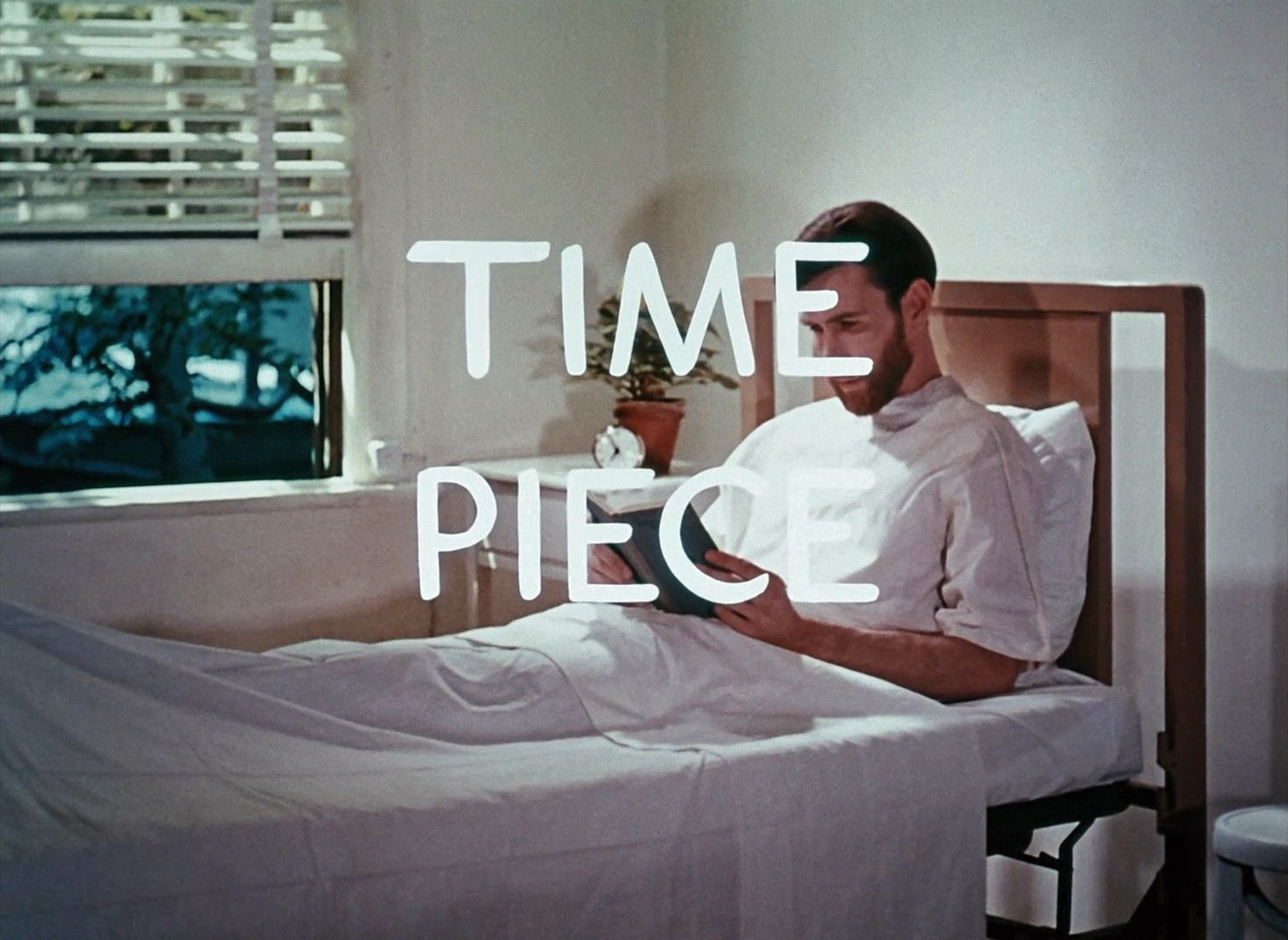

"Time Piece"
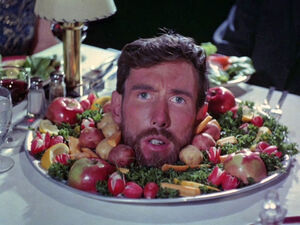
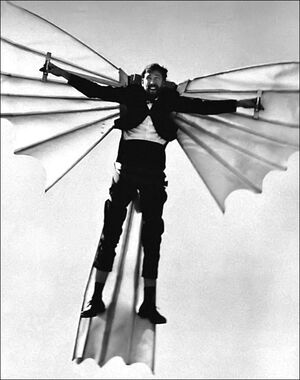
Time Piece is an experimental short film produced, directed, and written by Jim Henson, who also played the leading role. It is his most noted live action production not involving puppetry.
Henson began the project in the spring of 1964 (initially titling it Time to Go[1]) and continued to work on it for nearly a year, between commercial projects and various Muppet television appearances. The short film premiered on May 6, 1965 at the Museum of Modern Art and was distributed through Pathe Contemporary films to arthouse theaters and the film festival circuit. It played in New York City along with the French feature A Man and a Woman.
The surrealist film, which runs slightly less than 9 minutes, follows a nameless man who lies in a hospital bed awaiting examination by a doctor through a wide range of experiences. Mundane daily activities are intercut with surreal fantasy and pop-culture references. The relentless passage of time is a recurring motif, both visually, through various clocks, and aurally, through a rhythmic percussion soundtrack which "ticks away" throughout. Key setpieces include an examination of workplace drudgery, a prolonged dinner sequence (intended as a spoof of a scene from the film Tom Jones), and a nightclub visit satirizing the striptease (including a dancing roast chicken and a marionette skeleton). The man also rides a pogo stick, shoots the Mona Lisa, escapes from prison, and gradually applies a coat of pink paint to a living elephant. He assumes different costumes and identities throughout, from Tarzan to a cowboy, and repeatedly utters the only dialogue in the film, a plaintive cry of "Help!" from increasingly incongruous and perilous positions.
Apart from the rapid montage cutting and superimposition of objects, Jim Henson used animation heavily to create an impressionistic feel. He personally animated scenes of moving patterns, anticipating those later utilized in various Sesame Street inserts. Don Sahlin supervised the use of pixillation and reverse motion to further "stylize" the movements.
In 2008, the short was made available at the iTunes Store.
Trivia
- Seagrams receives a "Special Thanks" credit, for multiple shots of Seagrams liquor bottles in the film. Also thanked are Karl F. Meyer Clock Shop (for supplying the time pieces) and Restaurant Copain (where the dinner scene was filmed).
- At a MuppetFest panel, Kirk Thatcher stated that one of Henson's daughters portrayed the toddler seen running around during the "strip" montage, but jokingly refused to specify who for fear of strangulation.
- Several Henson Associates employees appear briefly in the film: Frank Oz (both as a messenger and in a gorilla suit), Jerry Juhl, Don Sahlin, and Diana Birkenfield.
- The remainder of the cast and crew was largely composed of a range of New York-based "bohemian" artists. Portrait artist Enid Cafritz, burlesque stripper April March, Broadway dancer Barbara Richman, and drummer Dave Bailey all appeared on-camera. Behind the camera, cinematographer Ted Nemeth had produced experimental animated films with wife Mary-Ellen Bute. The sound department included Bill Schwartau (engineer for Duke Ellington and Peter, Paul, and Mary records), Rudy Van Gelder (a pioneer in the jazz field for his work with the Blue Note label, and still active in film), and Frank C. Andriello (harmonica player and former member of the all-harmonica quartet The Polka Dots). Percussion was supplied by George Devens, referred to in All Music Guide as the most prolific vibraphone player in the recording industry, and Ed Shaughnessy, long time drummer on The Tonight Show.
Awards
Time Piece received several film festival awards, including the Blue Ribbon Award from the American Film festival in 1967, and was nominated for an Academy Award in the "Best Short Subject, Live Action Subjects" category.
Behind-the-Scenes Gallery
Cast
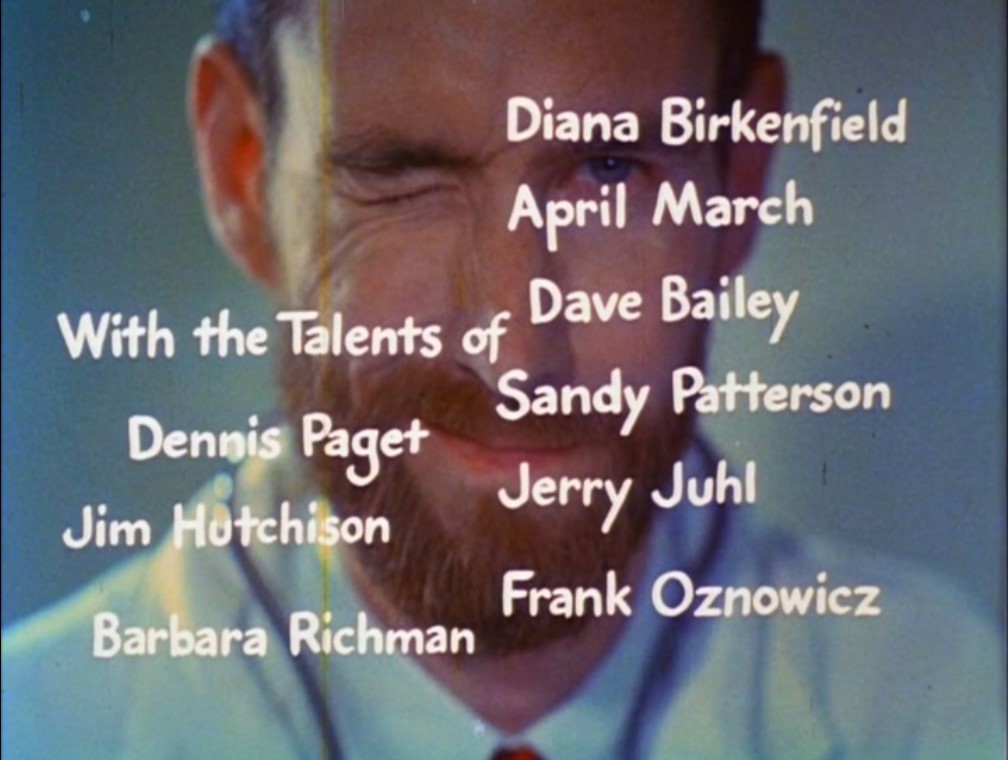
- Jim Henson as the Man
- Enid Cafritz as the Wife
- With the Talents of
- Jerry Juhl, Frank Oznowicz, April March, Sandy Patterson, Diana Birkenfield, Dave Bailey, Dennis Paget, Jim Hutchison, Barbara Richman
Credits
- Director of Photography: Ted Nemeth
- Music: Don Sebesky
- Percussion: Ed Shaunessy, George Devens
- Music Recorded by: Rudy Van Gelder
- Costumes and Makeup: Carroll Conroy
- Sound Effects: Frank C. Andriello
- Sound Effects Recorded by: Bill Schwartau
- Animation: Jim Henson
- Special Effects: Don Sahlin
- Written and Directed by: Jim Henson
- Produced by Muppets Inc.
See also
Sources
- ↑ Jim Henson: The Biography by Brian Jay Jones (page 110)
External links
- YouTube HensonCompany Channel - clip ● behind-the-scenes
- Jim Henson's Red Book entry








